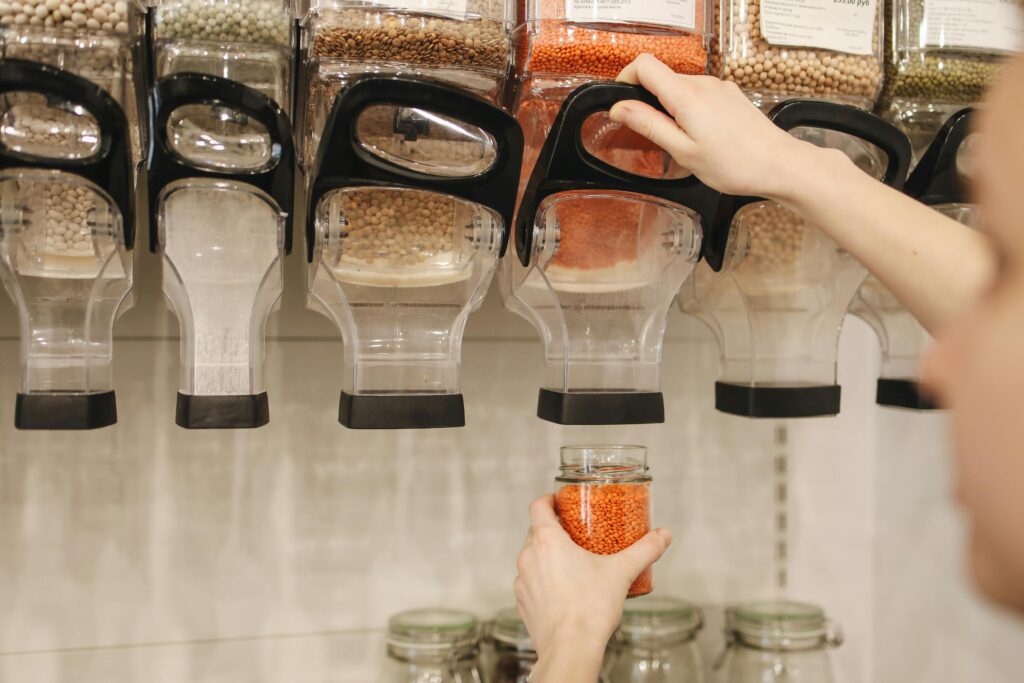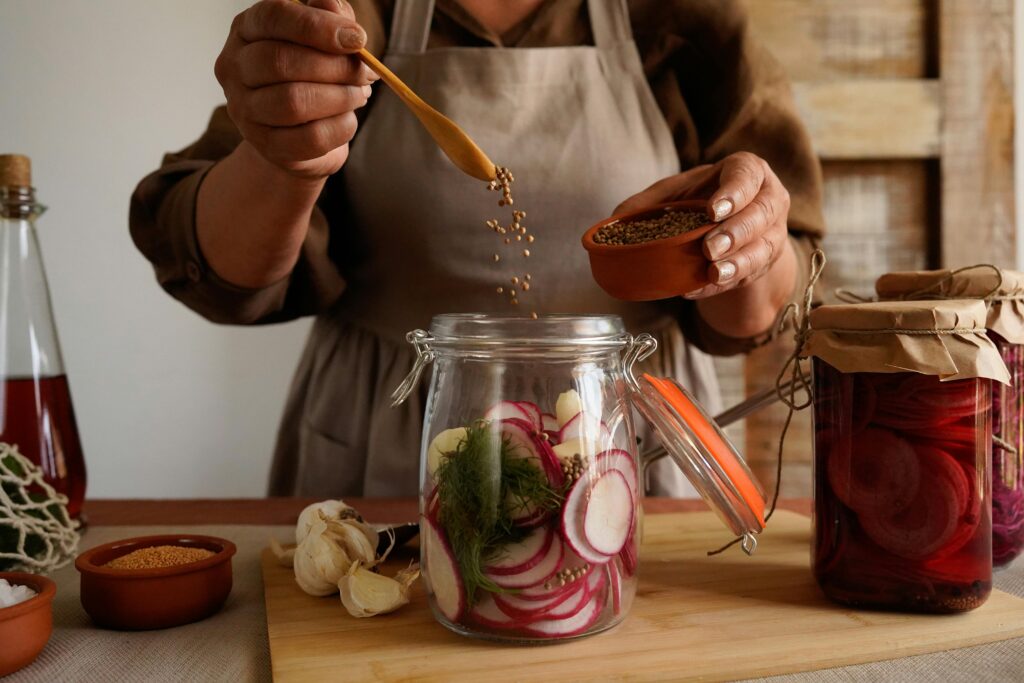Traveling feels freeing — new places, new people, and that sense of adventure you can’t get anywhere else. But let’s be honest: it often comes with a side of guilt when you look at all the plastic cups, disposable cutlery, and mini toiletries left behind. The good news? It doesn’t have to be that way.
Zero waste travel is about keeping your footprint light while still enjoying the journey. Whether you’re backpacking across Europe, heading to a beach getaway, or taking a quick weekend trip, a few small changes can make your travels far more sustainable. Let’s dive into some zero waste travel tips and eco-friendly travel hacks that actually work in the real world.
Why Travel Creates So Much Waste
When you’re at home, it’s easy to stay in control of your habits — reusable cups, bulk groceries, compost bins. But when you’re on the road, convenience usually wins. Think about it:
- Single-use water bottles and coffee cups at airports.
- Takeaway food containers that can’t be recycled.
- Hotel toiletries in tiny plastic bottles.
- Airline snacks wrapped in multiple layers of plastic.
Now multiply that by the number of travelers flying, driving, and staying in hotels every day. It’s no wonder tourism generates millions of tons of waste annually. But here’s the thing — you don’t have to be part of that statistic. With a few easy habits and a little prep, you can reduce waste dramatically without sacrificing comfort or convenience.
Pack Like a Sustainable Traveler
Let’s start with what you can control — your luggage. Packing smart is the first step toward zero waste travel. The goal is to bring versatile, reusable essentials that cut down on single-use items along the way.
1. Refillable Water Bottle
This one’s a no-brainer. Carrying a reusable water bottle saves hundreds of plastic bottles every year. Choose a stainless steel or BPA-free one. If you’re traveling somewhere where tap water isn’t safe, pack a small water filter bottle (like LifeStraw or Grayl) — it’s a game changer.
2. Reusable Cutlery Kit
Throw a travel cutlery set (spork, knife, straw, chopsticks) into your bag. You’ll be surprised how often you use it — in airports, at street food stalls, or even on flights.
3. Cloth Napkins and Handkerchiefs
Say goodbye to paper napkins. A simple cloth napkin or two takes up almost no space and comes in handy for snacks, wiping spills, or even wrapping food.
4. Reusable Containers or Silicone Bags
Perfect for leftovers or snacks on the go. Silicone bags seal tightly and can be rinsed out easily in hotel sinks. They also help you avoid single-use plastic bags or takeaway boxes.
5. Solid Toiletries
Skip the plastic bottles and switch to solid shampoo, conditioner, and soap bars. They last longer, take up less space, and don’t spill all over your luggage. Store them in metal tins or beeswax wraps instead of plastic pouches.
6. Eco-Friendly Travel Accessories
- Bamboo toothbrush instead of plastic ones.
- Reusable razor or safety razor with metal blades.
- Reusable tote bag for shopping or laundry.
- Solar charger or power bank for low-energy recharging.
Bonus hack: Pack light. The less you carry, the less carbon emissions your transport creates. Airlines burn more fuel with heavier luggage — so it literally pays to travel light.
Zero Waste Food and Shopping on the Go
Food is one of the biggest sources of travel waste — from airport snacks to restaurant leftovers. But you can still eat well without all the disposables.
1. Eat In, Not Out (of a Box)
Whenever possible, dine in instead of taking food to go. This instantly eliminates disposable cutlery and containers. Plus, you’ll enjoy your meal more when you’re not juggling takeout boxes on your lap.
2. Visit Local Farmers’ Markets
Markets are goldmines for sustainable travelers. You can grab fresh, local produce, talk to vendors directly, and avoid the excessive packaging found in supermarkets. Bring your own bags and jars, and you’re set.
3. Carry Reusable Containers for Leftovers
If you’re eating out and can’t finish your meal, use your silicone bag or small container to take it away. No Styrofoam boxes needed.
4. Skip Disposable Coffee Cups
Pack a collapsible travel mug or thermos. Most cafes are happy to fill it — and some even offer a small discount for bringing your own.
5. Buy Souvenirs that Last
Instead of plastic trinkets, look for handmade, locally crafted items or edible souvenirs like tea, spices, or jams in glass jars. You’ll support local artisans and avoid cheap, mass-produced waste.
Pro tip: Keep a small cloth tote in your daypack for impulse purchases — no need for plastic bags when shopping abroad.
Choose Sustainable Transportation and Accommodations
Traveling responsibly goes beyond what you pack — it’s also about how you move and where you stay.
1. Fly Smart (and Offset When You Can)
Flying has one of the biggest carbon footprints. If you must fly, try to book non-stop flights (takeoff and landing use the most fuel). Some airlines offer carbon offset programs — not a perfect fix, but a start.
Better yet, consider train or bus travel for shorter routes. It’s often more scenic, less stressful, and emits far less CO₂.
2. Walk, Bike, or Use Public Transport
Exploring on foot or by bike is not only eco-friendly — it helps you experience a city up close. Many cities now offer rental bikes or electric scooters that make it easy to get around sustainably.
3. Stay at Eco-Friendly Accommodations
Look for hotels or hostels that actively practice sustainability. Certifications like Green Key, LEED, or EarthCheck indicate real environmental commitment — things like solar power, waste reduction, and locally sourced food.
Or go for smaller guesthouses, eco-lodges, or Airbnb stays where you can cook your own meals and control your waste.
4. Conserve Water and Energy
Even simple actions help — reuse towels, take shorter showers, and turn off lights and AC when you leave the room. Little things, big impact.
Eco-Friendly Travel Hacks You’ll Actually Use
- Digital tickets: Skip paper boarding passes and tickets — use mobile versions instead.
- Reusable pen: Comes in handy for customs forms and avoids borrowing plastic ones at airports.
- DIY snacks: Bring your own trail mix or homemade granola in jars to avoid overpriced airport snacks.
- Bar soap for laundry: A small bar of castile soap can double as laundry detergent in a pinch.
- Eco-friendly sunscreen: Choose reef-safe formulas that don’t harm marine life.
- Download offline maps: Saves data and reduces battery drain while exploring.
Bonus: If you love documenting your trips, share your zero waste hacks online. You’ll inspire others and show that sustainable travel isn’t hard — it’s just a mindset shift.
Common Myths About Zero Waste Travel
“Zero waste travel is only for minimalists.”
Not true! Anyone can travel sustainably — it’s about conscious choices, not deprivation. You don’t need to fit all your waste into a mason jar to make a difference.
“Eco-friendly products are expensive.”
They’re investments that last. A stainless steel bottle or bamboo razor pays for itself after a few trips — and you’ll never need to buy disposables again.
“It’s too hard to stay plastic-free abroad.”
Sure, not every country has recycling bins on every corner, but reusable basics (like your bottle and bags) work anywhere. And remember, perfection isn’t the goal — awareness is.
Closing Thoughts
Zero waste travel isn’t about saying no to adventure — it’s about saying yes to mindful, responsible exploration. When you pack reusable essentials, choose sustainable stays, and skip the plastic along the way, you’re proving that eco-friendly travel can be stylish, simple, and deeply rewarding.
The more travelers make conscious choices, the more the industry will adapt. Imagine a world where airports have refill stations everywhere, hotels ditch single-use plastics, and every traveler leaves a place cleaner than they found it. That future starts with us — one trip, one choice at a time.
Live light. Live right. — The EcoHabitKit Team 🌿



